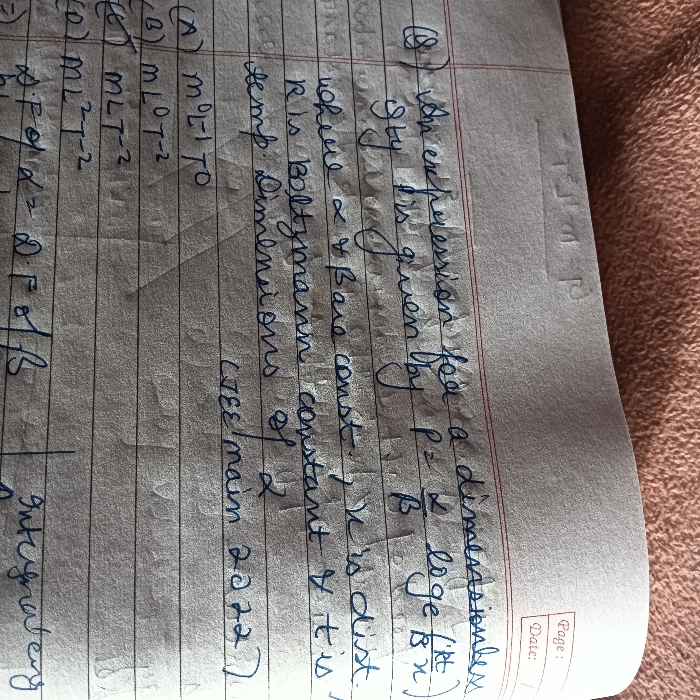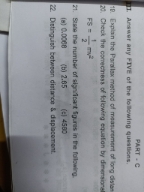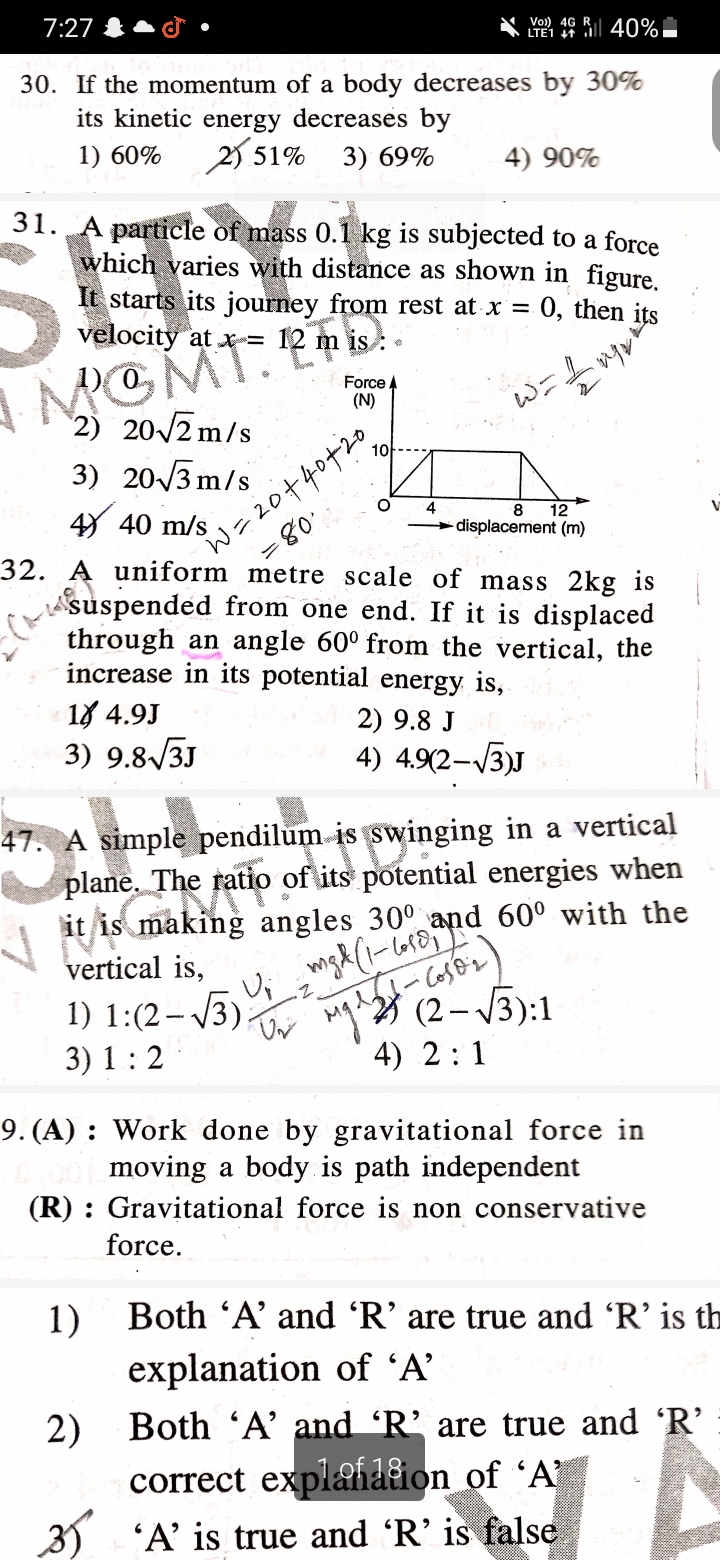CBSE Class 11-science Answered
A step-by step approach
Many people have trouble with thin-film interference problems. As usual, applying a systematic, step-by-step approach is best. The overall goal is to figure out the shift of the wave reflecting from one surface of the film relative to the wave that reflects off the other surface. Depending on the situation, this shift is set equal to the condition for constructive interference, or the condition for destructive interference.
Note that typical thin-film interference problems involve "normally-incident" light. The light rays are not drawn perpendicular to the interfaces on the diagram to make it easy to distinguish between the incident and reflected rays. In the discussion below it is assumed that the incident and reflected rays are perpendicular to the interfaces.
A good method for analyzing a thin-film problem involves these steps:
Step 1. Write down , the shift for the wave reflecting off the top surface of the film.
Step 2. Write down , the shift for the wave reflecting off the film's bottom surface.
One contribution to this shift comes from the extra distance travelled. If the film thickness is t, this wave goes down and back through the film, so its path length is longer by 2t. The other contribution to this shift can be either 0 or , depending on what happens when it reflects (this reflection occurs at point b on the diagram).
Step 3. Calculate the relative shift by subtracting the individual shifts.
Step 4. Set the relative shift equal to the condition for constructive interference, or the condition for destructive interference, depending on the situation. If a certain film looks red in reflected light, for instance, that means we have constructive interference for red light. If the film is dark, the light must be interfering destructively.
Step 5. Rearrange the equation (if necessary) to get all factors of on one side.
Step 6. Remember that the wavelength in your equation is the wavelength in the film itself. Since the film is medium 2 in the diagram above, we can label it . The wavelength in the film is related to the wavelength in vacuum by:
Step 7. Solve. Your equation should give you a relationship between t, the film thickness, and either the wavelength in vacuum or the wavelength in the film.









